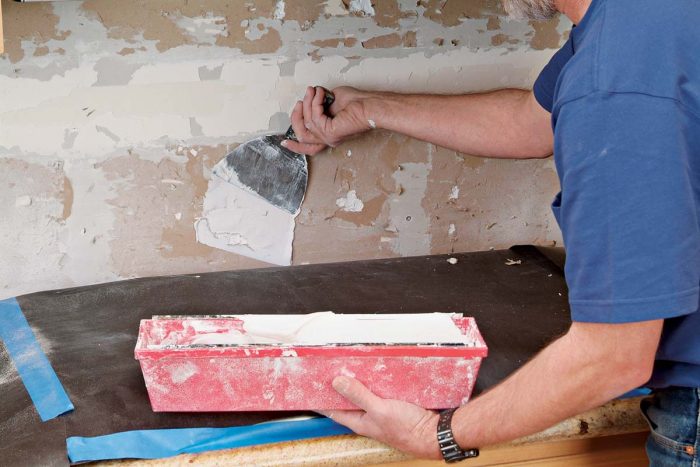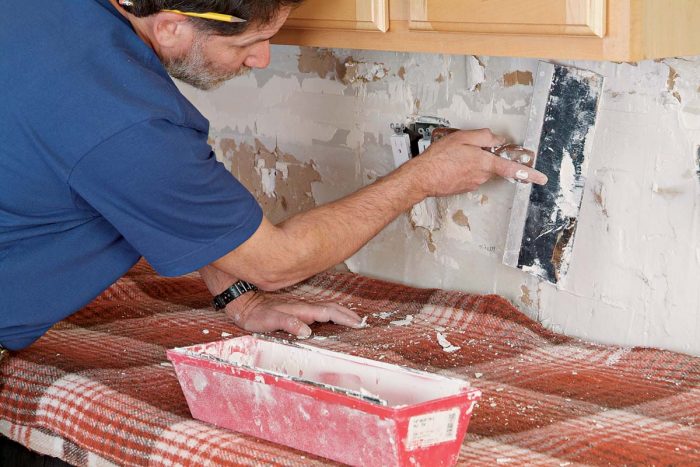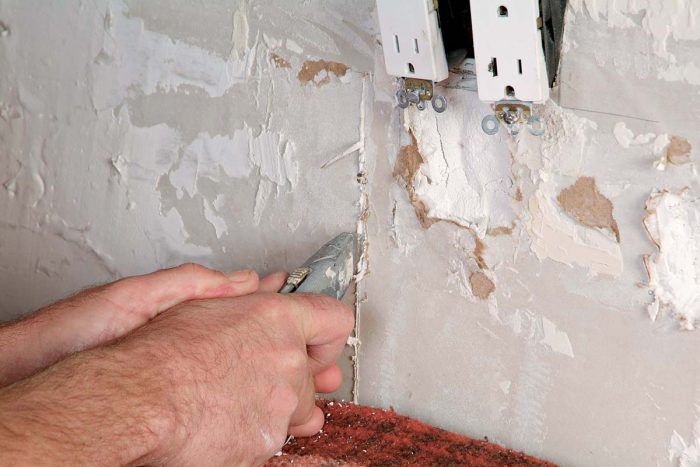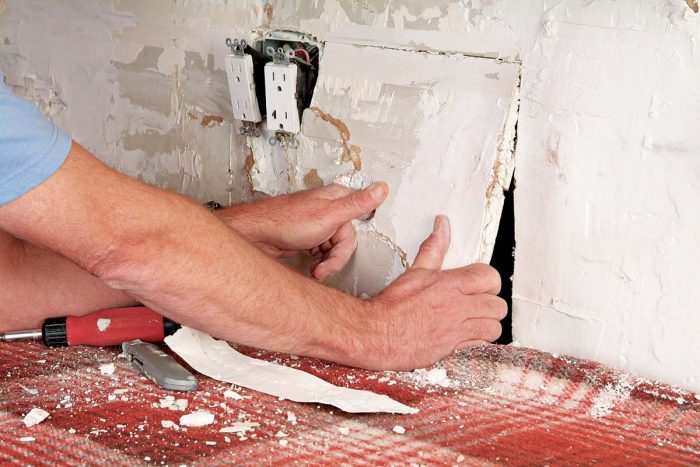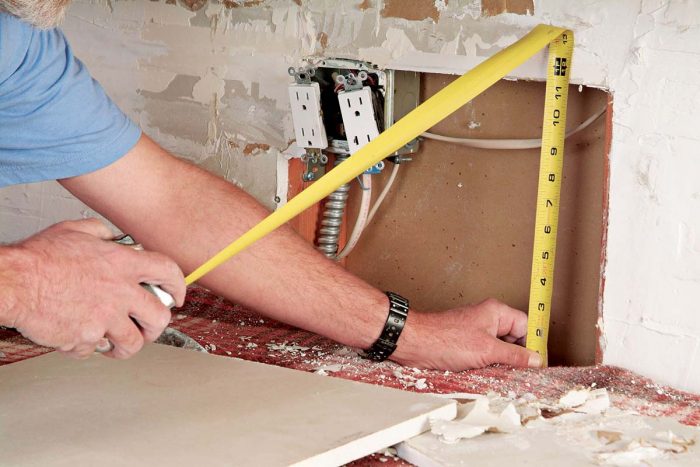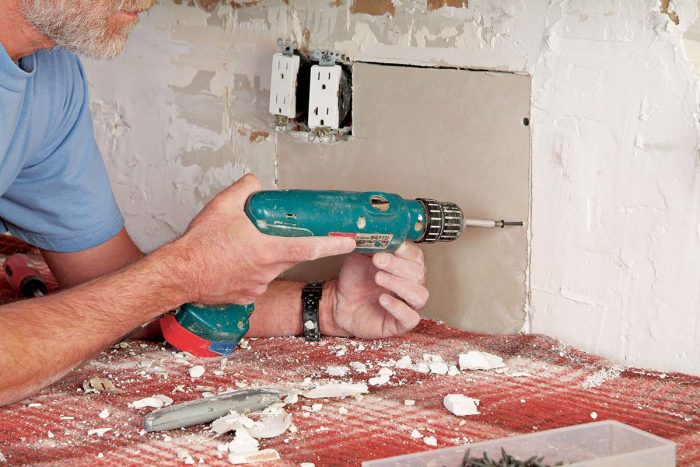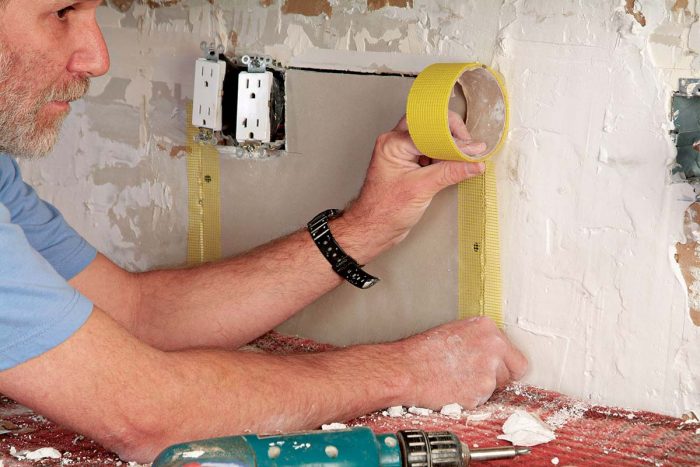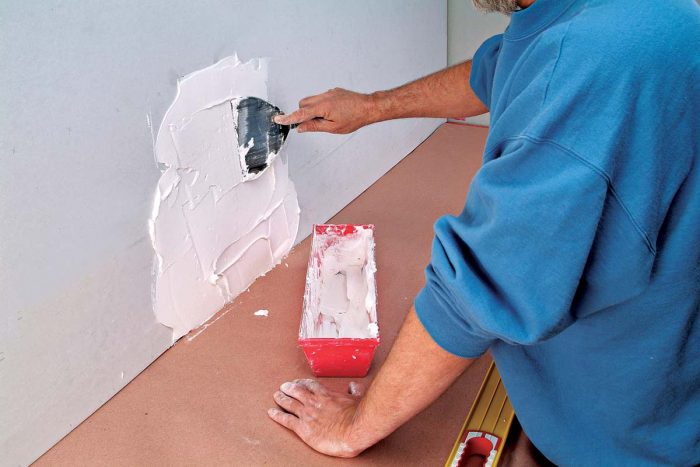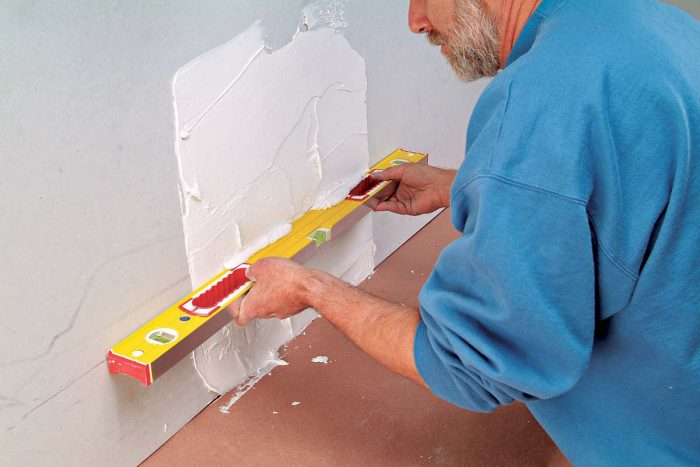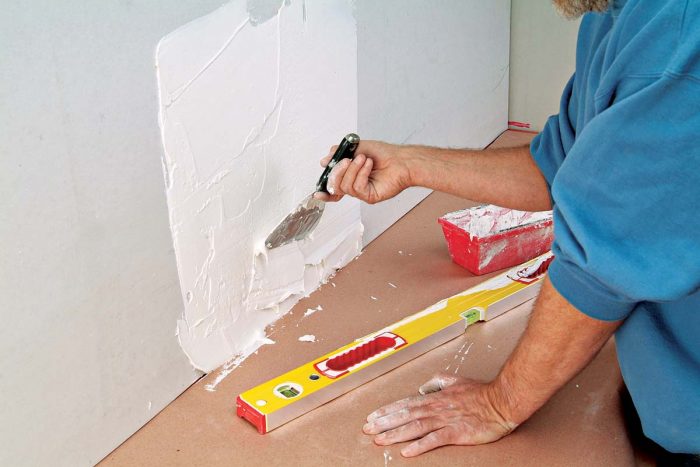Backsplash Repair and Prep
Patch any holes and flatten the wall before installing a tile backsplash.

Careful repair of holes and smoothing of bumps and valleys are important, because a flat surface will affect both the ease of installation and the final look of your tile. The smaller the tile you plan to install, the more defects show (every bump shows with small glass mosaic tiles). If you install larger rustic (irregular) tiles, wall irregularities are less noticeable.
To repair holes in your backsplash wall, use a fast-setting drywall compound or plaster repair mortar. Mix the powder with water (per the directions on the bag) and spread it with a putty knife 1. Fill each hole, then lightly scrape it flat with the putty knife, switching to a wider knife if necessary 2. If you find areas of drywall that flex excessively or are so soft that you can put your thumb through them, those sections will need to be replaced.
Cut out the bad section along the studs on both sides of the repair area 3, then across the top and bottom. Remove the defective piece 4 and clean up the edges of the hole alongside the studs. Measure the hole and cut a new piece of drywall to fit it 5. If the new section is thinner than the existing wall thickness, add shim stock to the studs to make the patch flush with the wall. Screw the patch in place with drywall screws and 6‚ tape the joints around the patch with drywall tape, to add additional strength 7.
Flattening the Wall
For a good-looking tile installation, the backsplash wall should be flat, without big hills and valleys. Check for flatness by placing a straightedge or level across the area and marking the low areas 1. Fill these areas by applying a quick-setting wall patch material 2. We use 20-minute drywall patch for drywall areas, quick-setting plaster patch for plaster walls, and SpeedSet thinset for brick or concrete block walls. Use a straightedge or level to screed (skim) off excess material 3. After letting the patch material firm up, apply more to any areas that are still low 4. Screed off again and allow the surface to dry completely 5. If your backsplash falls behind a sink area, you should now waterproof the wall by applying a liquid antifracture membrane. Applying a membrane is also necessary if you plan to install glass tile.
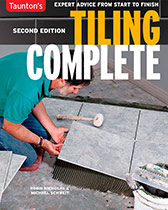 Excerpted from Tiling Complete, 2nd Edition by Robin Nicholas and Michael Schweit.
Excerpted from Tiling Complete, 2nd Edition by Robin Nicholas and Michael Schweit.
Available in the Taunton Store and at Amazon.com.

